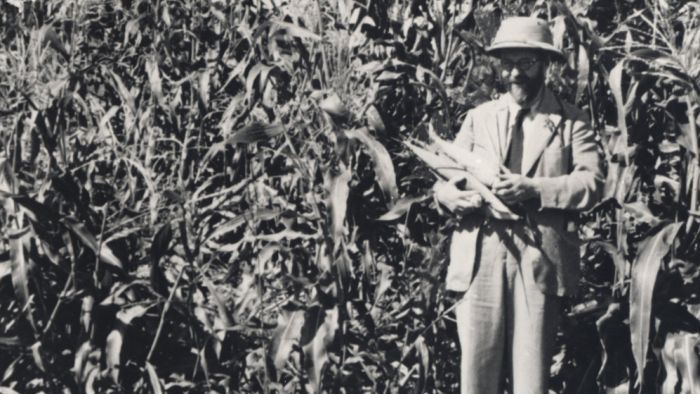As a means to escape the persecution of Jews in Europe, the top end almost became a sanctuary. Sadly, it was put on the backburner.
For another instalment in our occasional series on highlights in Australian history, I would like you to follow me to the Kimberley today. Yes, I know: hot and out of your way. But still, for some it seemed the promised land not so long ago. It all started in 1933, when a Polish writer called Melech Ravitch, realising that Hitler was serious about exterminating the Jews, looked on the world map and saw this great empty island on the other side of the world. It was ideal: far away from world politics and there seemed to be enough room for many thousands of people. He did some research into this country and recognised straight away that its White Australia Policy could suit Jewish, mostly white, migration from Europe and further East. Before he left, Ravitch secured permission from the Australian federal government to travel the country. He also carried a camera and letter of introduction from none other than Albert Einstein. When he arrived, he hired himself a young Aboriginal assistant and an Italian truck driver and went into the Kimberley Desert to see if this place would be fitting to become the new home for the multitude of Jewish refugees that were getting more and more desperate at home. Ravitch kept a journal, in which he wrote (in Yiddish) that he thought most problems in his new environment could be solved by “mehr vasser, veiniker bier” (more water, less beer). Which proves that he got the hang of this Australia-caper almost straight away.
Ravitch, who was a journalist and a poet as well, wrote stories about his adventures which ended up in newspapers and Frayland, the journal of the Freeland League for Jewish Territorial Colonisation, an organisation that had been established in the UK in 1935. Its aim was to find a homeland of sorts, a place where Jews could be autonomous and free, and Ecuador, Surinam and Australia seemed sparsely populated enough to be possibilities. Taking his cues from Ravitch and pushing this idea forward was Isaac Nachman Steinberg. Steinberg, a lawyer, had been the first Commissar of Justice in Lenin’s Bolshevik government, but had soon clashed with the leader of the Russian Revolution. When Lenin did away with due process, Steinberg angrily told him he felt his office was functioning as the “Commissariat for Social Extermination”. He knew he had to get out of Russia when his boss answered, “Well put. That is exactly what it should be.” Steinberg left his home country in 1923, moving to Berlin and fleeing again ten years later, to London this time, where he founded the Freeland League.
In 1938, Steinberg received a letter from JB Cramsie, ex-chairman of the Australian Meat Council, who had read some of Ravitch’s articles and insisted that the journalist had been right in advocating the North of Australia. He suggested 2,500 square miles on Melville Island or the Kimberley, where at least 25,000 “carefully selected, young and healthy Jewish families, whose breadwinners must have either farming experience or artisan training” could establish a “self-sufficient settlement”. When the plan was published in some European countries, Cramsie and Steinberg were flooded with enquiries, and not longer after, Steinberg got an offer of land. Seven million acres, in fact, two million in WA, five million in the NT, all of it owned by the firm of Connor, Doherty and Durack Ltd., who had been grazing cattle there for generations. Michael Durack told Steinberg that despite the reputation of the Kimberley as a place where white men couldn’t live, the land “would grow anything”. His company, he said, was “prepared to relinquish” the place “for a reasonable price”. He was convinced that “it was a country for white men who are prepared to make some sacrifices and work hard”. And he also thought that “Australia is not morally entitled to hold the North unless she makes some attempt to develop it. That is why I am so keenly interested in the proposed settlement”. Seeing that “the Jews in Palestine had made a wilderness fertile”, this was a plan that couldn’t fail.
Read the article by Ingeborg van Teeseling on The Big Smoke.

